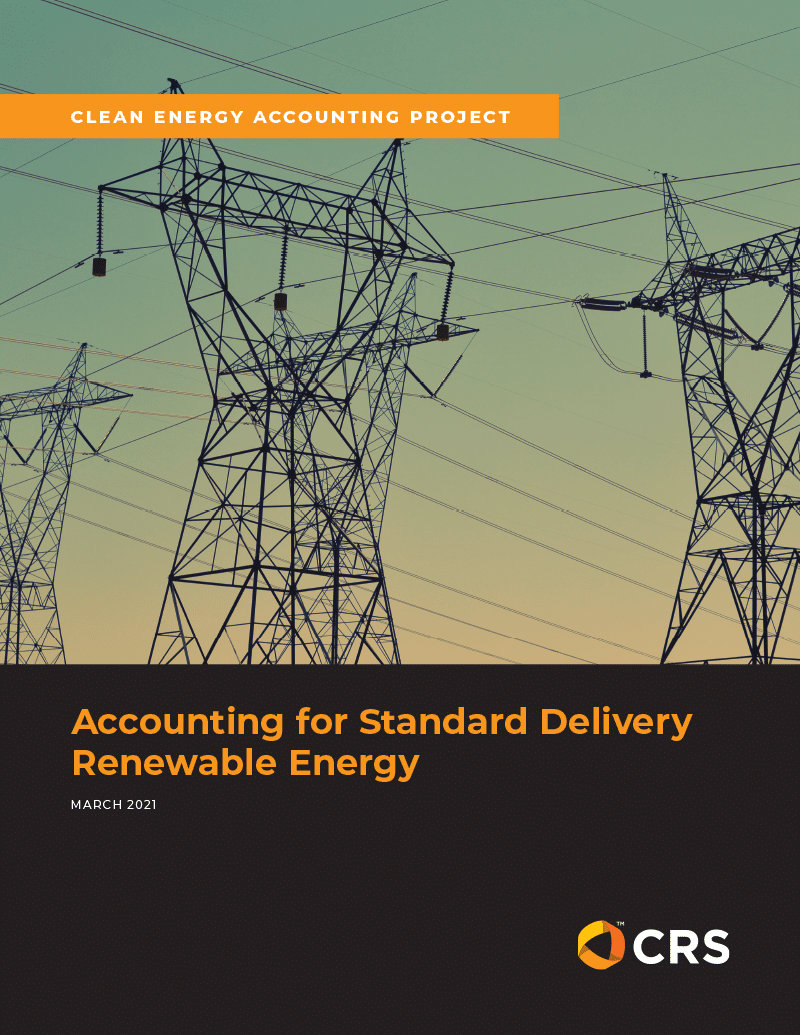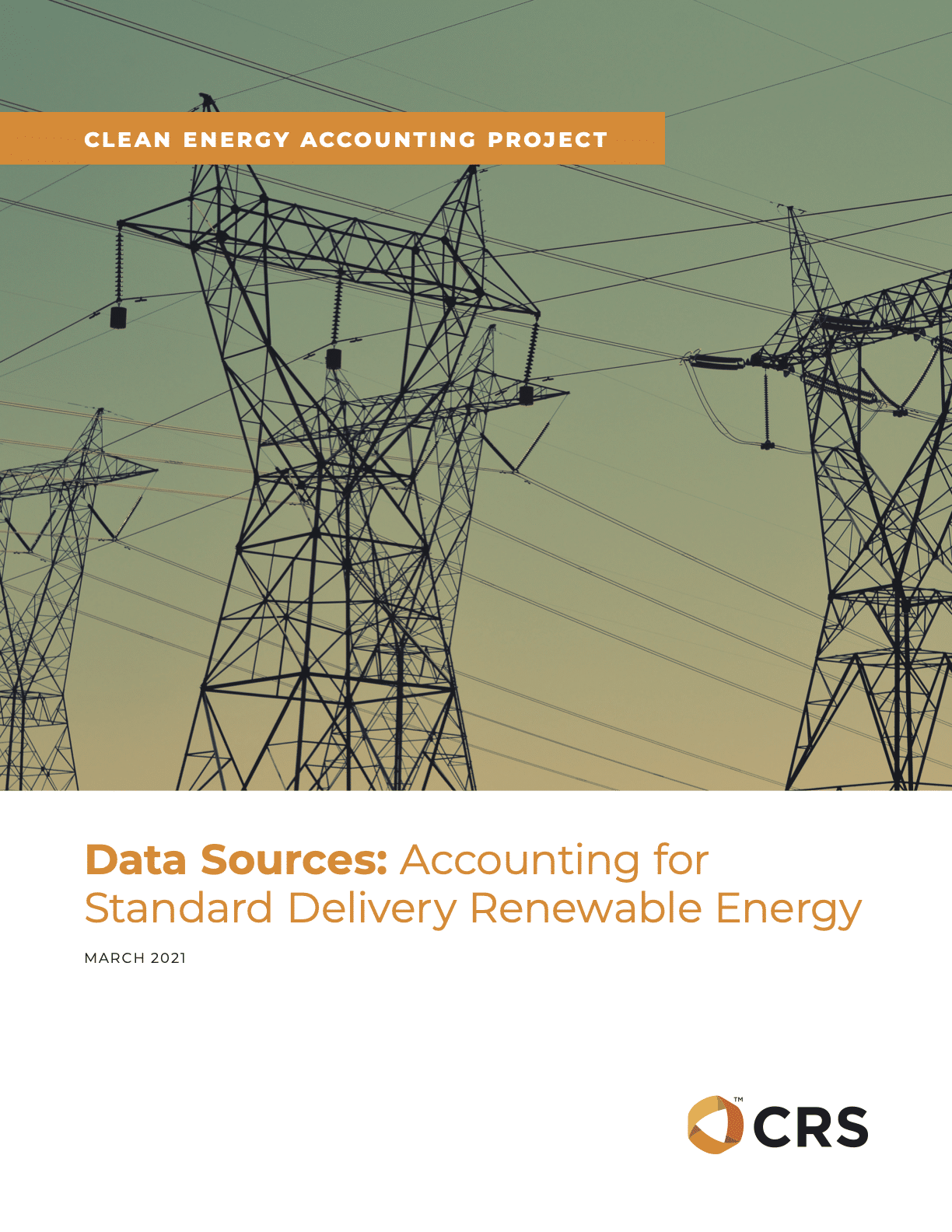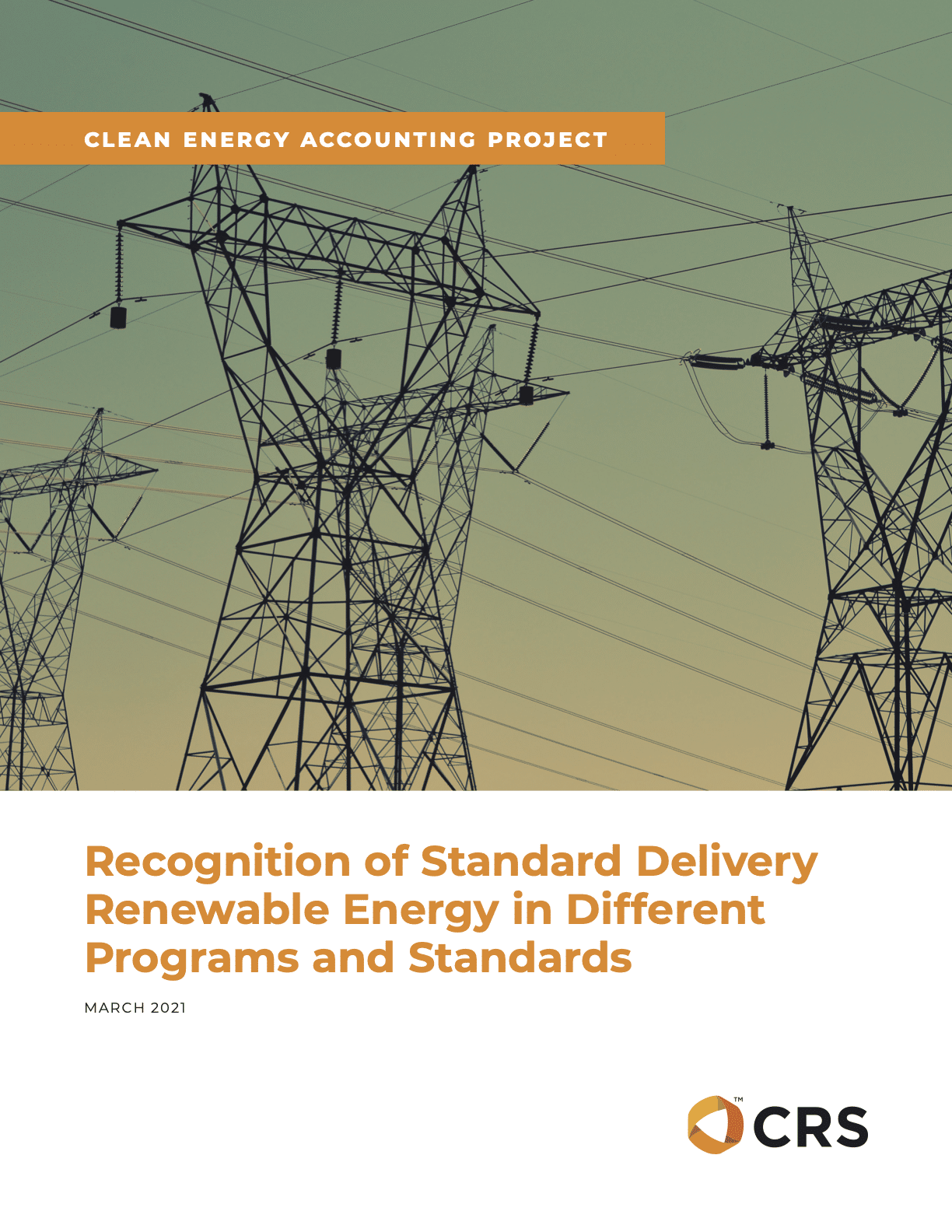Accounting for Standard Delivery Renewable Energy
Author(s): CRS Staff
Date: March 9th, 2021 | Report | 13 Pages
To address the inconsistencies when accounting for renewable energy that is not actively procured, CRS facilitated a series of virtual workshops to identify areas of consensus and quantification best practices.
Inconsistent approaches to accounting for Standard Delivery Renewable Energy—renewable energy that is not actively procured—have led to confusion for companies actively managing electricity and greenhouse gas emissions targets. In 2020, CRS facilitated a series of virtual workshops through its Clean Energy Accounting Project (CEAP) to identify areas of consensus and quantification best practices. This report is an outcome of that discussion and is intended to advance credible and consistent renewable energy accounting and claims.
The report details the strong consensus that consumers can claim to be using Standard Delivery Renewable Energy when renewable energy attributes and other requirements for credible renewable electricity usage claims are substantiated using credible data. It proposes a framework of credibility criteria and quality considerations that may be used to evaluate data sources available to customers, and explains how to integrate this information into renewable energy reporting.
The report also provides guidance on how to report active procurement and Standard Delivery Renewable Energy together when calculating renewable energy use. Recommendations are offered for the next steps necessary to fully and accurately account for renewable energy use.
Data Sources: Accounting for Standard Delivery Renewable Energy
Author(s): CRS Staff
Date: March 15th, 2021 | Report | 11 Pages
Developed in 2020 to support the Accounting for Standard Delivery Renewable Energy report published under CRS’s Clean Energy Accounting Project (CEAP), this document explores a representative sample of data sources available for accounting for renewable energy across the U.S., including utility-specific data, Renewable Portfolio Compliance data, Residual Mix data, and grid average data.
It examines the underlying calculation methods for each, and highlights variability within and across them.
Recognition of Standard Delivery Renewable Energy in Different Programs and Standards
Author(s): CRS Staff
Date: March 15th, 2021 | Report | 8 Pages
Many voluntary standards and programs have policies around recognizing the use of renewable energy that is not actively procured by the reporting entity (Standard Delivery Renewable Energy). These policies are communicated explicitly, implicitly, or through the use of greenhouse gas (GHG) emissions factors.
This document presents a representative summary and comparison of current program requirements for accounting for delivered renewable energy. It was developed in 2020 to support the Accounting for Standard Delivery Renewable Energy report published under CRS’s Clean Energy Accounting Project (CEAP).
Webinar
Consumers working to meet renewable energy and greenhouse gas emissions targets find many challenges when accounting for renewable energy that they do not actively procure. This webinar will present the newly defined consensus position on credible use claims for Standard Delivery Renewable Energy, explore variability across current data sources, and propose a new set of data credibility criteria and quality considerations to guide consumers. We will also explore how leadership criteria may go beyond credibility and examine a real-world case study.
Speakers:
- Holly Lahd, Lead Energy Program Manager, Target
- James Critchfield Director, Green Power Partnership Program, U.S. EPA
- Todd Jones, Director, Policy, Center for Resource Solutions
- Peggy Kellen, Director, Policy, Center for Resource Solutions


